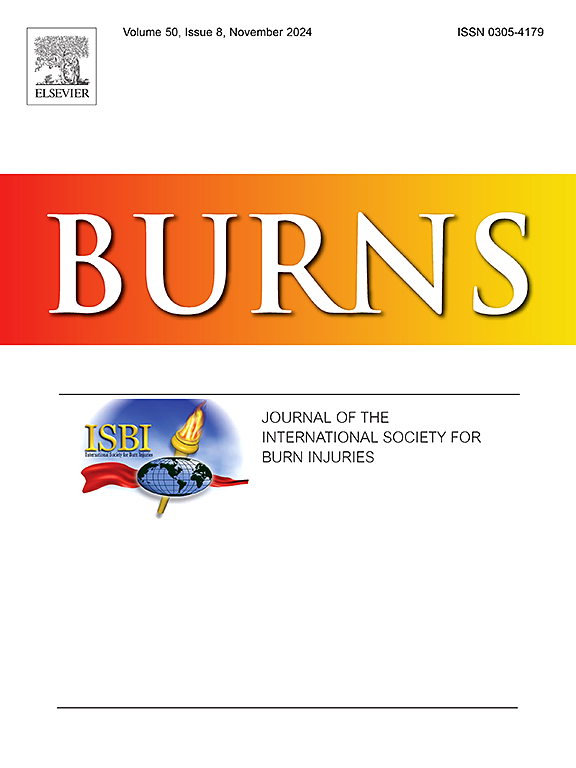Recent advances in the use of essential oils and their nanoformulations for wound treatment
IF 3.2
3区 医学
Q2 CRITICAL CARE MEDICINE
引用次数: 0
Abstract
Despite progress in medical and surgical treatments of wounds, bioactive compounds still offer an effective and safe approach to accelerate wound healing (WH). In this review, recent results of studies on WH by essential oils (EOs) and their terpenoids are reported. Mechanisms of action of these substances and their possible use in drug delivery systems (DDSs) for WH are discussed. EOs of 38 species from 16 families have been evaluated for their potential to treat wounds. Lamiaceae was the most representative family with 10 species, followed by Myrtaceae and Asteraceae. EOs improve WH by acting as anti-inflammatory, antioxidant, and antimicrobial agents. Some other EOs were involved by increasing expression of transforming growth factor (TGF), inhibition of several factors, including plasminogen activator inhibitor-1 (PAI-1), substitution of type III collagen by type I collagen, and up-regulation of insulin-like growth factor-1 (IGF-1), fibroblast growth factor 2 (FGF-2), and vascular endothelial growth factor (VEGF). These mechanisms improved repair of cells and increased proliferation. Alternatively, DDSs based on nanomaterials (NMs) used to carry EOs for WH are mainly based on nanoparticles (NPs), microparticles (MPs) and scaffolds. There is much evidence that EOs can promote WH. Advancement of nanotechnology in recent years has contributed to improving use of EO with DDSs in WH management. However, some limitations need to be addressed to achieve the translation of this technology into clinical applications for wound treatment.
使用精油及其纳米制剂治疗伤口的最新进展。
尽管伤口的药物和手术治疗取得了进展,但生物活性化合物仍然是加速伤口愈合(WH)的一种有效而安全的方法。本综述报告了精油(EO)及其萜类化合物对伤口愈合的最新研究成果。文中还讨论了这些物质的作用机制及其在伤口愈合药物输送系统(DDS)中的可能用途。对 16 个科 38 个物种的桉叶油治疗伤口的潜力进行了评估。其中最具代表性的科是唇形科,有 10 种,其次是桃金娘科和菊科。环氧乙烷通过抗炎、抗氧化和抗菌作用改善伤口。其他一些环氧乙烷则通过增加转化生长因子(TGF)的表达、抑制多种因子(包括纤溶酶原激活物抑制剂-1(PAI-1))、用 I 型胶原替代 III 型胶原、上调胰岛素样生长因子-1(IGF-1)、成纤维细胞生长因子 2(FGF-2)和血管内皮生长因子(VEGF))来改善 WH。这些机制改善了细胞修复并增加了细胞增殖。另外,基于纳米材料(NMs)的 DDSs 用于携带环氧乙烷,主要基于纳米颗粒(NPs)、微颗粒(MPs)和支架。许多证据表明,环氧乙烷可以促进健康。近年来,纳米技术的发展有助于改善环氧乙烷与 DDSs 在 WH 管理中的应用。然而,要将这项技术转化为伤口治疗的临床应用,还需要解决一些局限性问题。
本文章由计算机程序翻译,如有差异,请以英文原文为准。
求助全文
约1分钟内获得全文
求助全文
来源期刊

Burns
医学-皮肤病学
CiteScore
4.50
自引率
18.50%
发文量
304
审稿时长
72 days
期刊介绍:
Burns aims to foster the exchange of information among all engaged in preventing and treating the effects of burns. The journal focuses on clinical, scientific and social aspects of these injuries and covers the prevention of the injury, the epidemiology of such injuries and all aspects of treatment including development of new techniques and technologies and verification of existing ones. Regular features include clinical and scientific papers, state of the art reviews and descriptions of burn-care in practice.
Topics covered by Burns include: the effects of smoke on man and animals, their tissues and cells; the responses to and treatment of patients and animals with chemical injuries to the skin; the biological and clinical effects of cold injuries; surgical techniques which are, or may be relevant to the treatment of burned patients during the acute or reconstructive phase following injury; well controlled laboratory studies of the effectiveness of anti-microbial agents on infection and new materials on scarring and healing; inflammatory responses to injury, effectiveness of related agents and other compounds used to modify the physiological and cellular responses to the injury; experimental studies of burns and the outcome of burn wound healing; regenerative medicine concerning the skin.
 求助内容:
求助内容: 应助结果提醒方式:
应助结果提醒方式:


